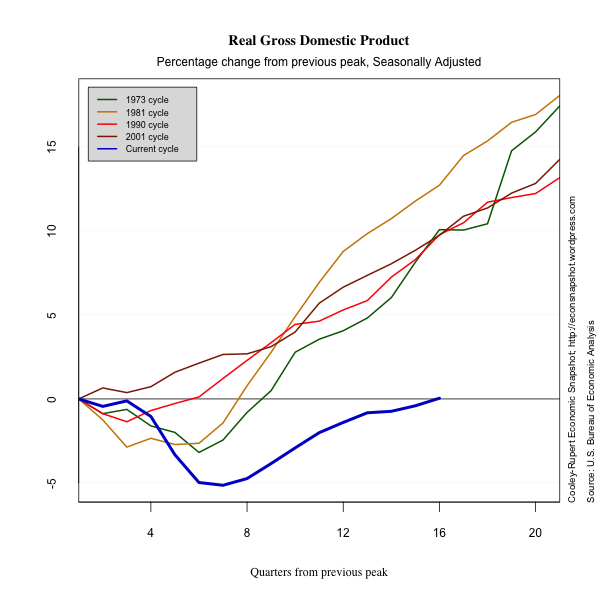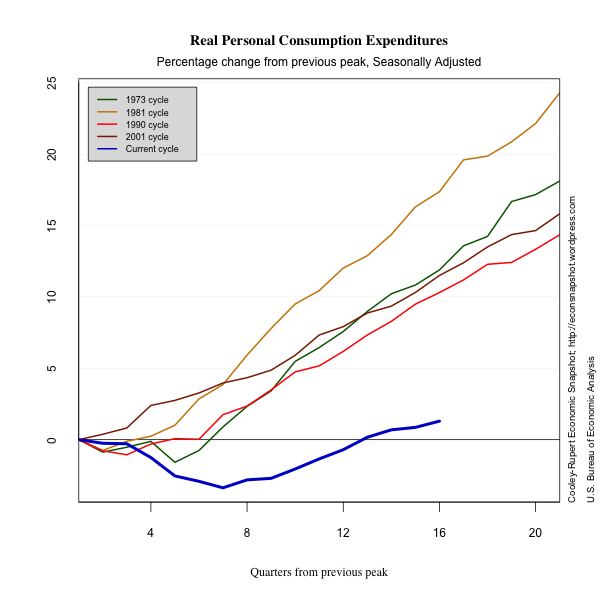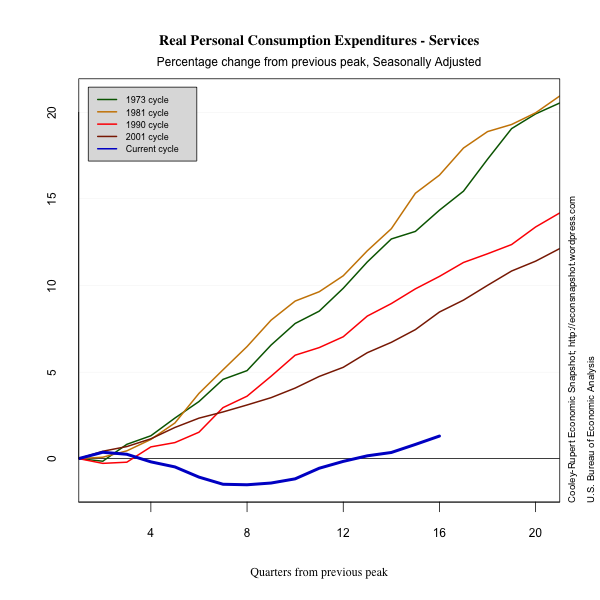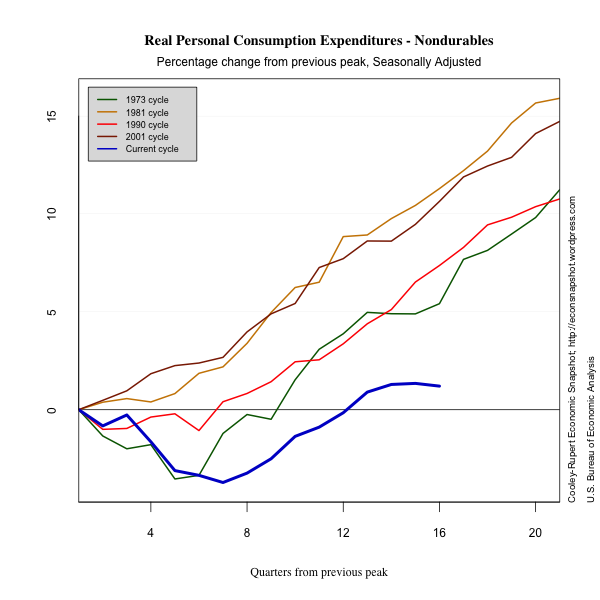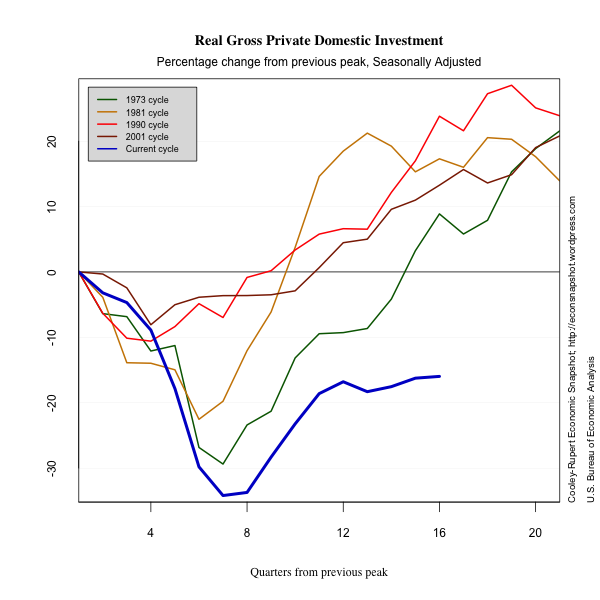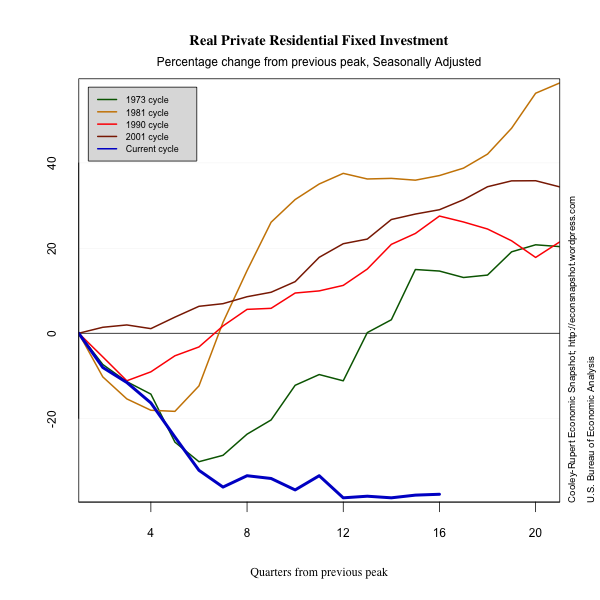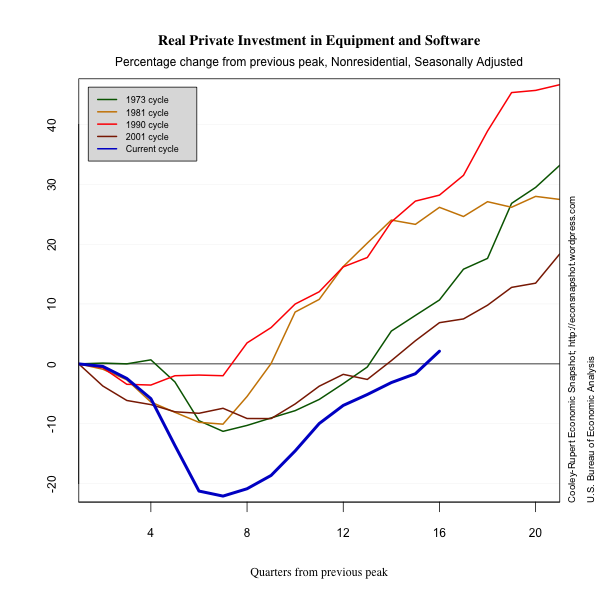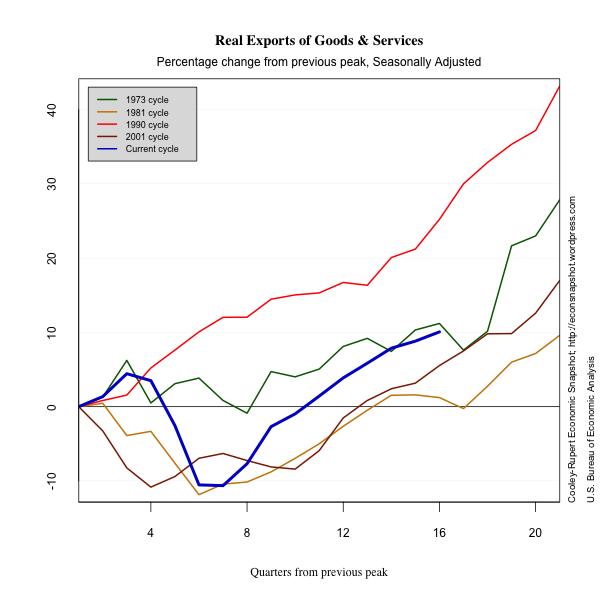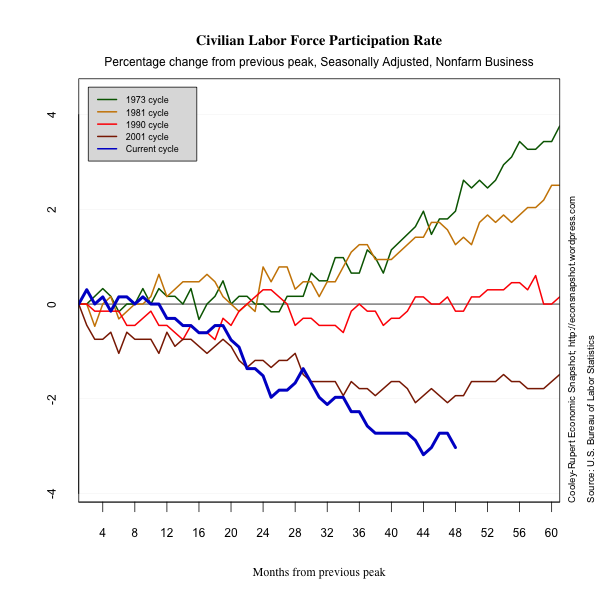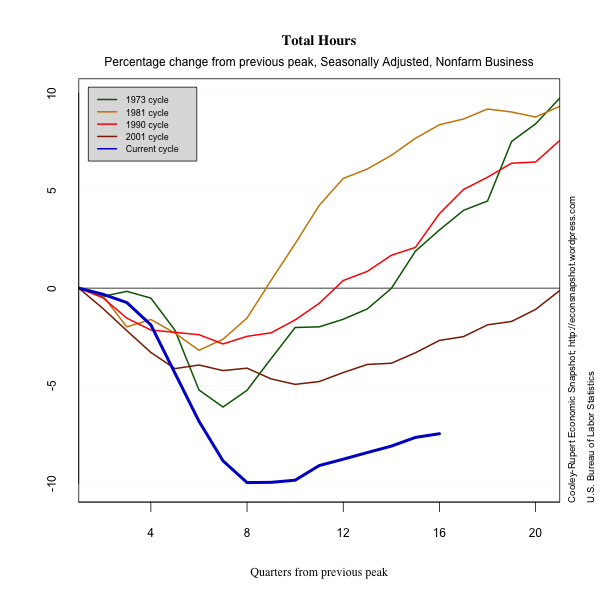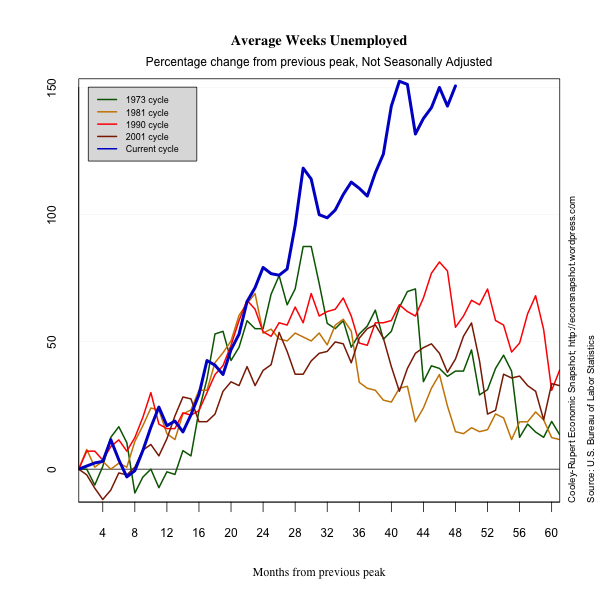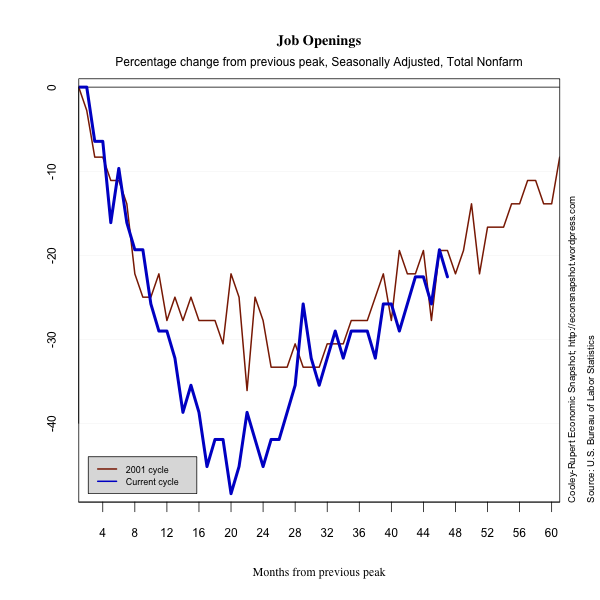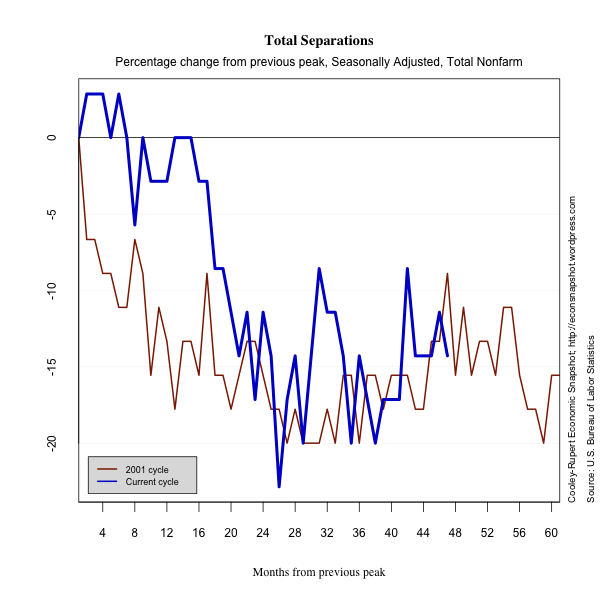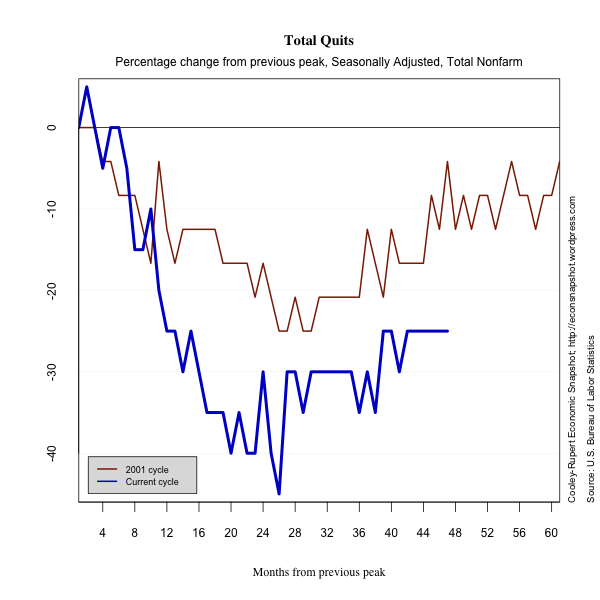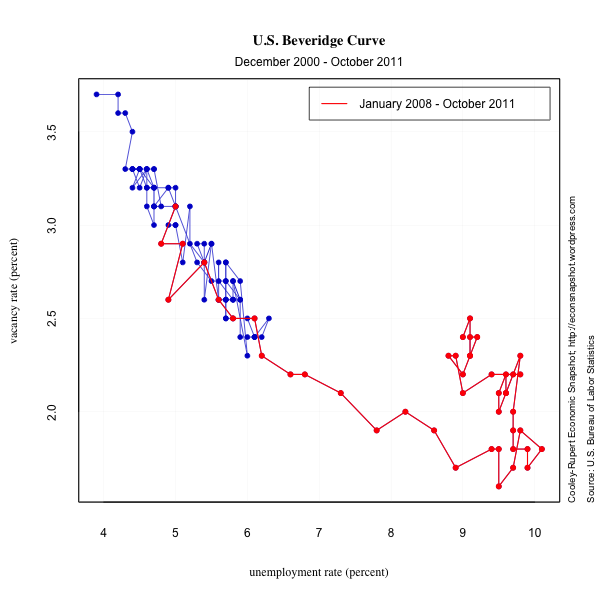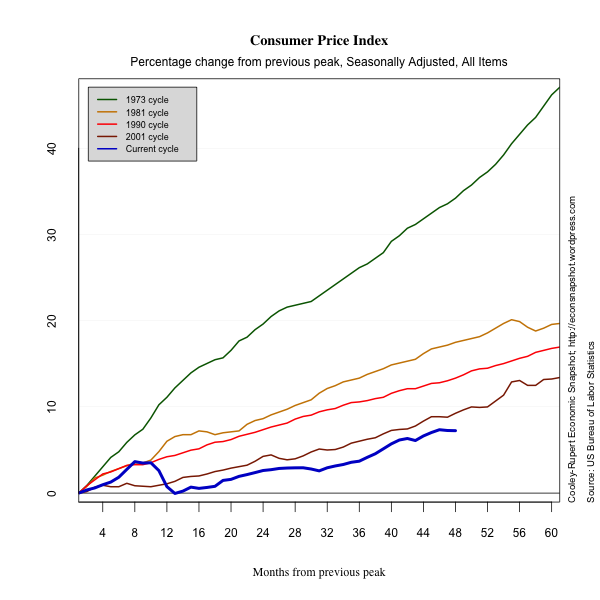Welcome to the Cooley-Rupert Economic Snapshot – our view of the current economic environment. This post primarily updates third quarter GDP and its components based on the final revisions by the Bureau of Economic Analysis. We also include updated sections on the labor market (including a look at jobless claims), the credit market, and industrial production.
As in previous snapshots we present the data in a way that we find particularly useful for assessing where we are in the business cycle and tracking the U.S. economic recovery. The paths of all the series presented are plotted relative to the their value at the peak of the respective business cycles. We use the business cycle dates identified by the National Bureau of Economic Research.
As always we welcome any suggestions for additional data that you would like to see and suggestions for how to improve the presentation of the data. Click here to go to the latest snapshot in one pdf document.
Final Third Quarter Revisions…A Little Less Optimism
The most recent GDP numbers include the revisions of preliminary data on economic activity for the third quarter. The revisions scale back the more optimistic assessment of the preliminary number and now place third quarter GDP growth 1.8% percent per annum rather than the 2.0 and 2.5 percent growth rates previously estimated. The recovery is still continuing but at a much slower pace than previously thought. There is still no case to be made for a double-dip recession but there is a great deal of uncertainty in the economy due to economic turmoil in Europe and its threat to the global financial system as well as fiscal uncertainty in the U.S..
The downward revisions were due in large part to changes in inventories and imports.Fixed Private Residential Investment continues to be completely stagnant, bouncing along at a level that is 40% below the previous peak. To repeat the thought experiment from our previous blog, GDP is roughly $15 trillion and Gross Private Domestic Investment is roughly $1.9 trillion or 12.6% of GDP. Private Residential Fixed Investment is more than $300 billion below its business cycle peak and nearly $500 billion below its own peak. Since there is currently no compelling scenario under which residential investment is likely to recover this will continue to drag down the economy for many quarters to come. In no other post-1970 recession did it fall so far and continue to stagnate nearly four years since the recession began. The last time residential investment was this low was in 1996 when GDP was slightly more than half what it is now.
The Labor Market
The latest employment situation report from the BLS shows a net addition of 80,000 non-farm jobs in October. The unemployment rate declined slightly to 9.0%. While the 80,000 figure is really nothing to write home about, the revisions to August and September were substantial. Prior payrolls were revised higher for both August (104,000 from 57,000) and September (158,000 from 103,000). Private sector jobs increased by 104,000 and the government sector continued to shrink, losing another 24,000 jobs. Construction continues
to get hammered, losing another 20,000 jobs. Since May the construction sector has been see-sawing up and down, but on net has shed 1,000 jobs. The employment to population ratio continued to slowly creep up. However, there was virtually no change in the labor force participation rate. The number of long term unemployed (27 weeks and over) fell
by 366,000.
As we noted in a previous post, the dating of business cycles by the NBER is based on a mixture of evidence that often includes reference to the labor market. Indeed, when the NBER dating committee dated the beginning of this past recession, they made it clear that the labor market was a key variable in their decision, as can be seen here. However, when the committee announced the trough there was no mention of the labor market, which has not shown any signs of recovery. Indeed, the paths of the employment/population ratio and the labor force participation rate make the strongest case for concern about a double dip recession.
In this post we take a deeper look at the labor market, including data on Aggregate Hours of work and the duration of unemployment. Aggregate Hours captures changes in both the extensive margin of labor force adjustment (employment), and the intensive margin (hours of work). Many believe this offers a more accurate picture of the economy …and the picture is grim. The data on the duration of unemployment is particularly discouraging.
We also include data from JOLTS, the Job Openings and Labor Turnover Survey. JOLTS data shows more refined features of the labor market and permit comparison to the 2001 business cycle. The JOLTS data confirms what the latest jobs report shows – modest improvement in the labor market. There has been an increase in vacancies, and an increase in quits. Both of these suggest that the labor market is beginning to show more flexibility than in the last several months. In fact while the level of openings and quits are still well below their value from December 2007, the start of the cycle, they closely track the trend from the 2001 cycle. The changes are modest but encouraging.
The Credit Markets
Credit markets continue to show the after-effects of the tremendous increase in leverage the took place prior to the 2007-2009 crisis. Households are continuing to reduce their debt and at an increasing rate. Corporate sector borrowing continues to improve and is following a path that is typical of prior recessions. The big story in credit markets is the dramatic shift of leverage to the public sector. Public sector debt outstanding is reaching levels unprecedented in the post-war economy.
Industrial Production and Inflation
In this section we present some plots of miscellaneous series that reflect other characteristics of this business cycle. The decline in industrial production is dramatic. There is no evidence of inflation or deflation.
